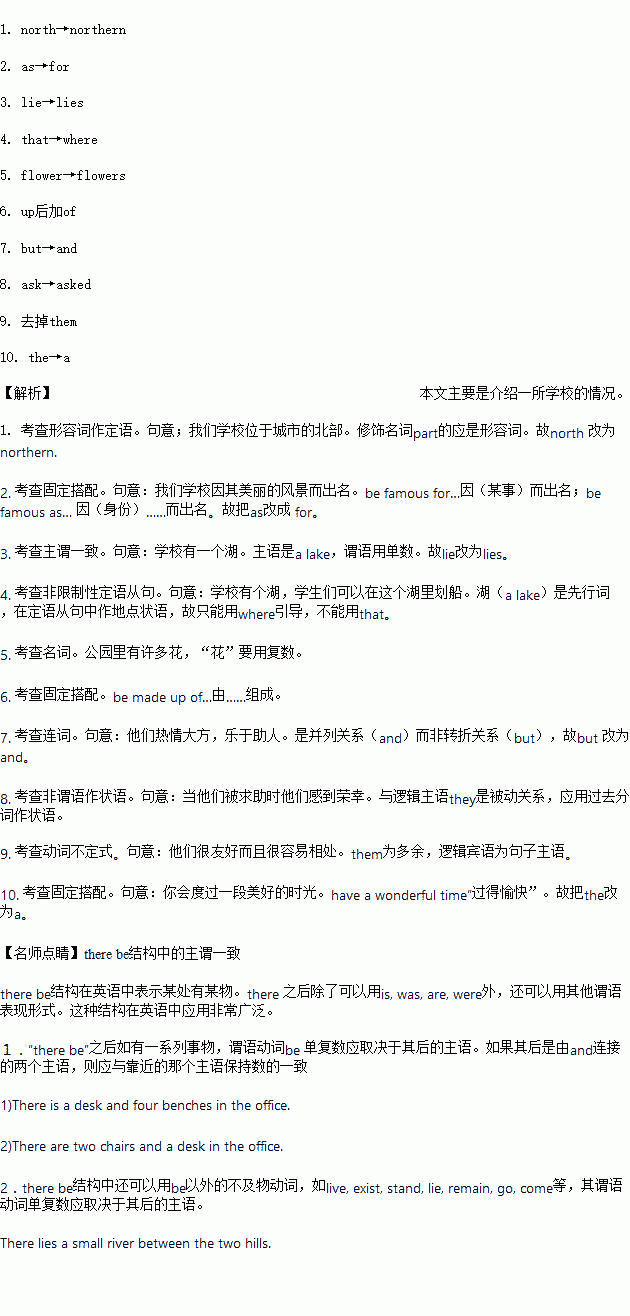题目内容
假定英语课上老师要求同桌之间交换修改作文,请你修改你同桌写的以下作文。文中共有10处语言错误,每句中最多有两处。每处错误仅涉及一个单词的增加、删除或修改。
增加:在缺词处加一个漏字符号(∧),并在其下面写出该加的词。
删除:把多余的词用斜线(\)划掉。
修改:在错的词下画一横线,并在该词下面写出修改后的词。
注意:1.每处错误及其修改均仅限一词;
2.只允许修改10处,多者(从第11处起)不计分。
Hello, everyone. Welcome to our school. Now I’d like to introduce our school to you. Our school is located in the north part of the city. It’s famous as its beautiful scenery. There lie a lake in our school, that students can boat. Close to our school is a beautiful park with flower around. Every class is made up 50 lively students. They are warm, generous but ready to offer help. They feel honoured when ask for help. So they are very friendly and easy to get along with them. You will have the wonderful time and get used to the life soon.

